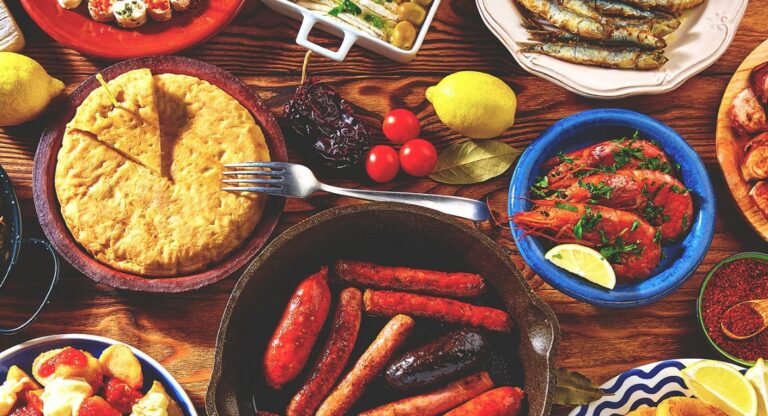Introduction: Breakfast Culture in Spain
Breakfast is considered the most important meal of the day in Spain, and it is often said that a heavy breakfast helps to kick-start the day. Spaniards take their breakfast seriously, and it is usually a leisurely affair that involves socializing with friends and family while enjoying a delicious meal. In Spain, breakfast is known as “desayuno,” and it is typically a simple meal consisting of bread, coffee, and juice.
Traditional Breakfast Foods in Spain
The most common breakfast foods in Spain include toast with butter and jam, croissants, churros, and tortilla de patatas (potato omelet). Churros, a long, thin, and fried dough pastry, are a favorite breakfast food in Spain, often served with a cup of hot chocolate for dunking. Toast with tomato and olive oil, known as “pan con tomate,” is another popular breakfast dish in Spain, which involves rubbing a tomato on toasted bread and drizzling it with olive oil.
How Bread plays a Vital Role in Spanish Breakfast
Bread is a staple in the Spanish breakfast, and it is often served toasted with olive oil, butter, or jam. Some breakfast dishes, such as the “tostada,” consist of a slice of bread that is toasted and topped with tomato, ham, or cheese. In Spain, bread is considered a vital part of any meal, and it is served with almost every dish, including breakfast.
Spanish Breakfast Beverages: Coffee and Juice
Coffee is a staple in the Spanish breakfast, and it is often served black, with milk, or with condensed milk. A popular coffee drink in Spain is “café con leche,” which is a cup of coffee with milk. In addition to coffee, freshly squeezed orange juice is another popular breakfast beverage in Spain. Spaniards believe that drinking freshly squeezed orange juice provides a healthy start to the day.
Regional Variations: Breakfast across Spain
In Spain, breakfast varies from region to region. For instance, in the Basque Country, breakfast often involves eating a “txistorra,” which is a type of sausage made from pork. In Andalusia, breakfast may include “churros con chocolate,” while in Catalonia, breakfast may consist of “pa amb tomàquet,” which is a slice of bread rubbed with tomato and drizzled with olive oil.
Tips to enjoy a Spanish Breakfast Experience
If you want to enjoy a Spanish breakfast experience, you should try to find a local café or bakery that serves freshly baked bread and pastries. You should also try to sample different regional breakfast dishes to get a taste of the local cuisine. Finally, remember that breakfast in Spain is a leisurely affair, so take your time and enjoy the meal while socializing with friends and family.

